Legendary River – Epic Challenges
(Updated August 2021)
Continuous Monitoring Protects the Nile
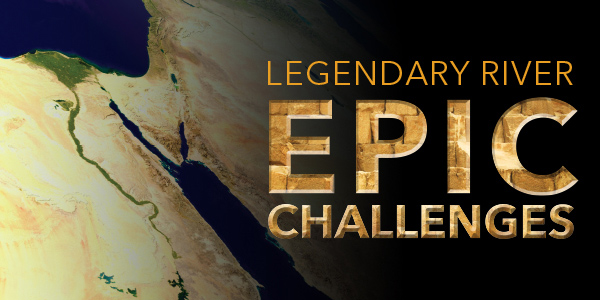
There's Nothing Small About the Nile River
Its 6,853-kilometer (4,258-mile) path traces from Lake Victoria to the Mediterranean Sea. Since the days of the Pharaohs, it has been at the center of Egyptian life and lore.
The Nile began nourishing cities along its banks 8,000 years ago and continues to supply 95 percent of Egypt's water, irrigating the nation's crops, powering its industry and supplying nearly all of the nation's 99 million people. Just before branching into its rich delta, the Nile passes through the Cairo metropolitan area, where 20 million residents are packed into one of the densest population centers on earth. And every step of the way along its path through deserts, farms and cities, the Nile delivers precious water, but it also picks up massive loads of pollutants.
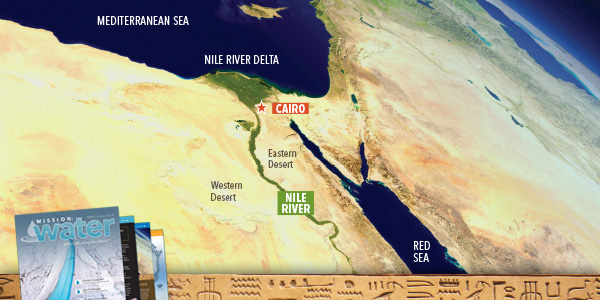
Iteru, meaning "great river", was the name of the Nile River in the ancient Egyptian language.
"Running through a heavily populated city like Cairo has its own challenges on this important body of water: illegal discharge of untreated waste from factories, pollution caused by boats and ships, and human behavior," says Hassan Al Salem, YSI's Bahrain-based analytics expert for the Middle East and Africa.
>> Download full copy of Mission: Water Magazine
Upstream, the system is polluted by discharges from sugar and paper mills, runoff from mining and fish farming, trash and sewage from villages and cities on the river's banks, and nutrients and pesticides from farms in the fertile Nile River Valley. Along the river's path, infestations of canal-choking aquatic weeds slow the movement of water.
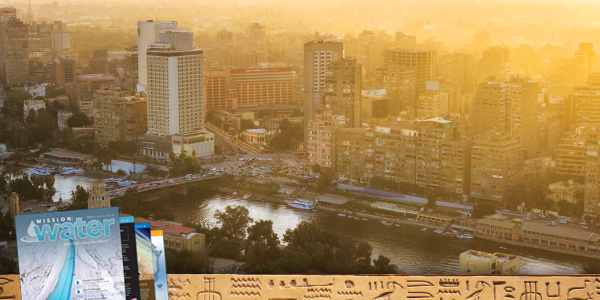
CAIRO, Egypt: View of the Nile River in the evening. December 29th, 2017
High temperatures, abnormal pH values, high levels of dissolved organic matter (DOM), chemicals from poorly treated industrial wastewater, and sewage add to the challenge, adds Mohamed Abd Elnasser, after-sales and technical support engineer for Giga Systems, a YSI partner based in Cairo.
In fact, a 2012 report by professors at Egypt's Ain Shams University noted that although 100 percent of the country's cities had sewage treatment facilities at the time, just 40 percent of its rural villages had that capacity. Egypt's goal is to provide all villages with sewage treatment by 2022, but in the meantime, raw sewage will remain a problem.
Mounting Concern
"These pollution sources eventually cause a lot of diseases to the citizens, such as kidney and liver failure," Abd Elnasser notes. "These diseases cost the country millions of [Egyptian] pounds and affect the Egyptians' capability to live normally."
Pressure on the government began mounting to curb pollution as water quality continued to degrade in recent years, Al Salem notes.
"Existing laws didn't enforce legal actions against damage to the environment until recently, when the pressure on water quality increased," he explains. "Therefore, the government took major and ambitious steps to establish laws, as well as a monitoring network on the Nile."
The country's parliament passed environmental legislation that will require every industrial facility to monitor its own wastewater quality in real time and report the data to the Ministry of Environmental Affairs, says Abd Elnasser. The laws are currently being reviewed by the minister.
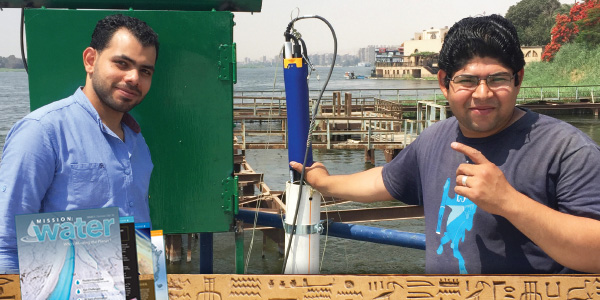
Mohamed Abd Elnasser and Mostafa Ahmed of Giga Systems install a YSI EXO2 sonde along the Nile. Photo Courtesy: Mahmoud Diab
While rules requiring dischargers to monitor their wastewater work their way through the government, the ministry has begun a sweeping effort to conduct its own continuous monitoring effort.
Dr. Sayed Mostafa, head of the Central Water Quality Administration of the Egyptian Ministry of Environmental Affairs, leads a continuous water quality monitoring program that currently covers nearly 1,000 kilometers (620 miles) along the Nile with 20 monitoring stations. The program, which began in the middle of 2015, started in the upper Nile and has been extending north toward the delta over time.
"The result is an expanding network of continuous water quality monitoring stations that is extending every year from upper Egypt to lower Egypt and covering all types of water bodies such as the canals, drains and wastewater pumping stations," Abd Elnasser says. "This network will be expanded further in the near future, as it is becoming a national issue to manage Nile water quality."
Building Awareness
Data from the string of water quality monitoring stations has already had a range of benefits, starting with getting a handle on the levels and types of pollution along various reaches of the river.
"The main reason is to realize the effect of these pollution sources, to have evidence of any violations, and to track the action taken to minimize these bad behaviors and the results of applying regulation," says Abd Elnasser. "Another reason is to use the data as a valuable source in research."
A bonus, Mostafa told Abd Elnasser, is that dischargers near the water quality monitoring stations have become more conscientious about the quality of water they release into the river—even before the new laws take effect.
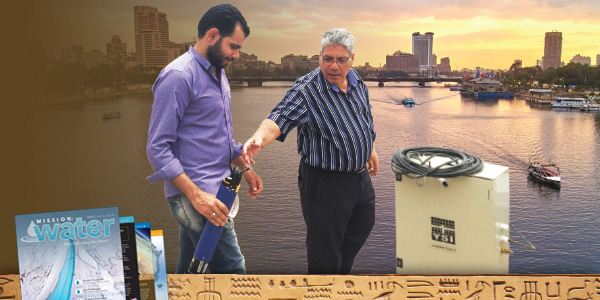
Mostafa Ahmed of Giga Systems teams up with Dr. Sayed Mostafa along the Nile monitoring network. Photo Courtesy: Mahmoud Diab
Building a Network
Each monitoring station is equipped with a YSI EXO2 multiparameter sonde. Every 30 minutes, the sondes capture measurements of a wide range of water quality parameters including temperature, conductivity, salinity, total dissolved solids, dissolved oxygen (DO), pH, and fluorescent dissolved organic matter (fDOM).
Mohamed Abd Elnasser of Giga Systems notes that continuous monitoring provides a rich perspective on pollution events that would go unseen in a grab-sample program.
>> Download full copy of Mission: Water Magazine
"Continuous monitoring in a 30-minute time interval made it better to catch any short-period event that is likely to be missed if the same sites were monitored in traditional, discrete ways," he explains. "Monitoring different parameters at the same time can give some patterns of dependencies between different parameters, can give data more meaning, and can be used as a means of discarding non-logical data and spikes."
Fending Off Fouling
One of the challenges of continuous monitoring in a highly polluted environment like the Nile River is maintaining accurate measurements without succumbing to fouling.
On a massive network of monitoring stations along the Nile, Cairo-based Giga Systems team helped Egyptian Ministry of Environmental Affairs technicians outfit 20 YSI EXO2 sondes with a heat-shrink protective cover and copper anti-fouling tape. Each sonde was deployed inside a PVC tube drilled with holes that allow water to flow past the sensors from all sides. And the sensors themselves are built and maintained to resist the buildup of foreign material.
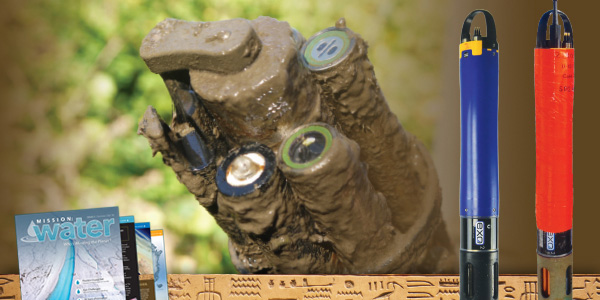
The EXO platform features a central wiper, a best-in-class anti-fouling accessory for extending deployments and safeguarding data against all manner of environmental fouling.
"Its central wiper is a good means of guaranteeing good sensor condition along extended deployment periods with minimal maintenance," notes Mohamed Abd Elnasser, after-sales and technical support engineer for Giga Systems. "Optical sensors are more accurate and eliminate the concerns of traditional electrochemical and membrane technology. And the sensors being made of titanium and the ability to add anti-fouling kits made it the best choice for long-term continuous measurement."
Secure Connection
With the engineering support of YSI Regional Integration Center (RIC) in Abu Dhabi, Giga Systems teamed each sonde with a Storm 3 data logger to maintain a steady flow of data from the field into the ministry.
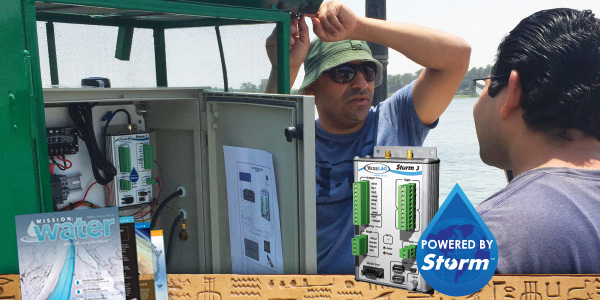
Eihab Abo Zied and Mohamed Abd Elnasser install a Storm3 data logger to ensure a steady flow of information from the field. Photo Courtesy: Mahmoud Diab
"The Storm 3 data logger gives us the ability to choose from radio, cellular or satellite modems and antennas," says Abd Elnasser. "The integrated GSM-GPRS suits us the best because the monitored stations are distributed all over the country and using cell modems is less expensive than satellite.
"We rely on Storm Local software for collecting data from all monitored sites because it is a point-to-point connection and makes it more secure than uploading data to the cloud," he explains, adding that other users may find the cloud more flexible for data-sharing arrangements.
Brighter, Cleaner Future
Abd Elnasser anticipates that as the Nile water quality monitoring network expands, the ministry may benefit from a software package to query and analyze meaningful information from a massive amount of data.
But like hundreds of generations of Egyptians, his focus is on the great river itself. He hopes the monitoring program will create meaningful change in the health of The Nile.
"The Nile was, still is and will always be the source of life to Egypt," says Abd Elnasser. "Maintaining it in a well condition is a vital issue to Egypt."
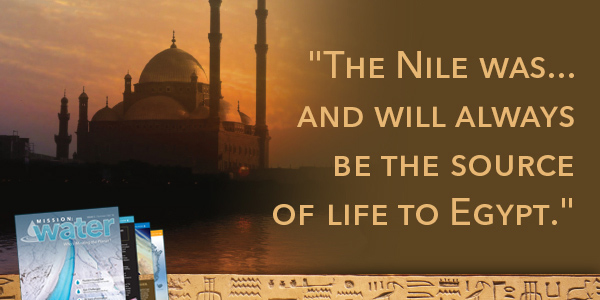
Learn more about environmental projects in Egypt: www.eeaa.gov.eg

If you'd like to have your research or study published in one of our next issues of Mission: Water magazine, please send us an email and we'll discuss the possibility! Send email to missionwater@xyleminc.com and Brandon, Theresa, or Patrick will reach out ot you!